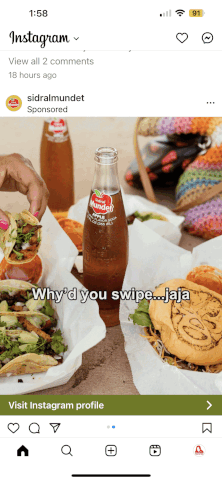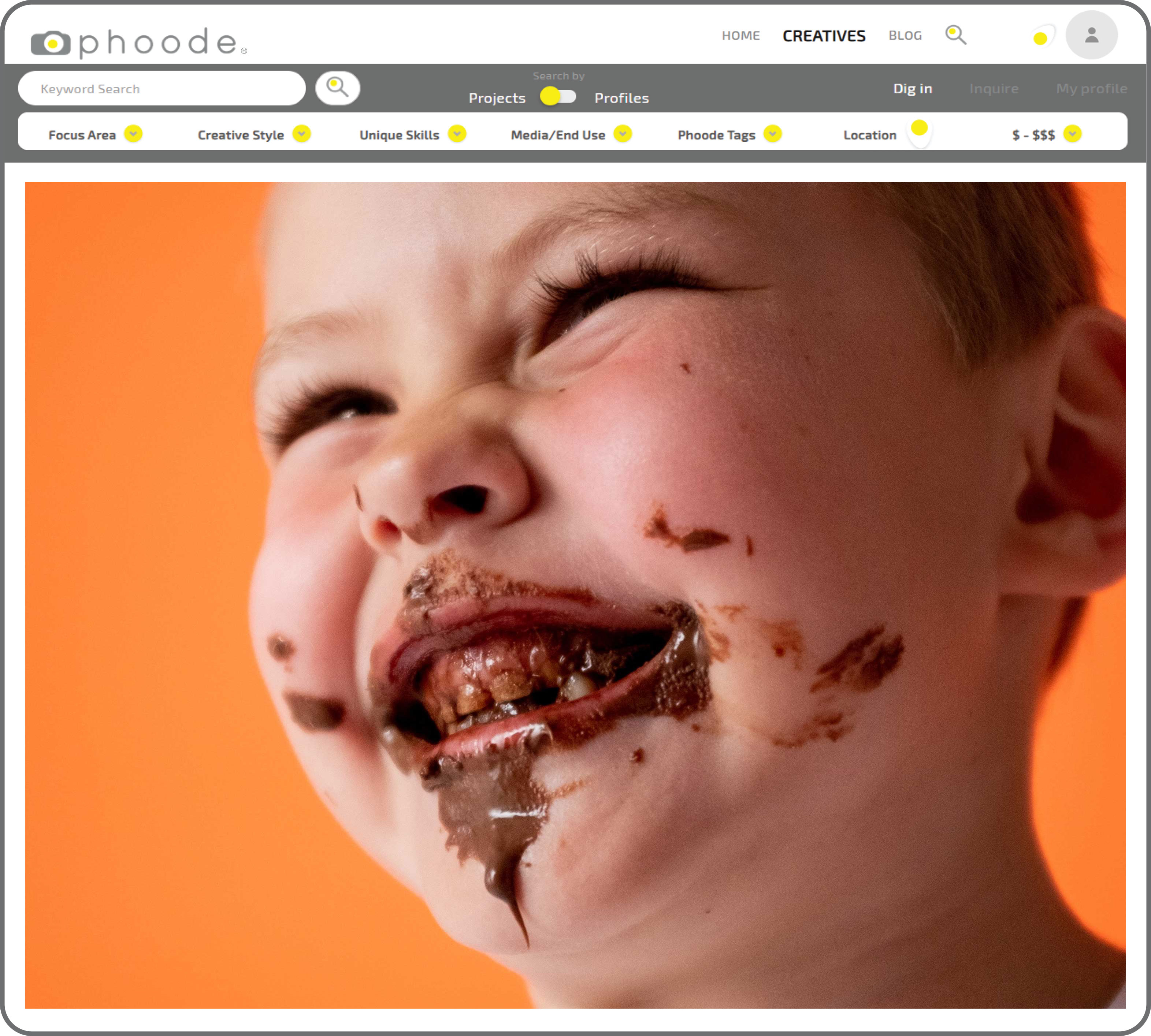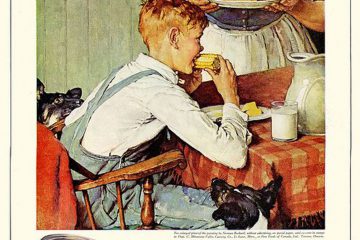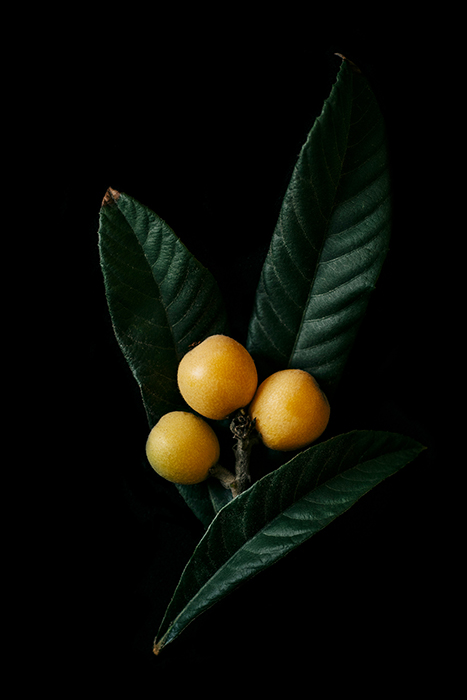The Food and Beverage Marketers Scarcity Mindset Breeds Scarcity of Results
I wonder how many food and beverage marketers truly consider the products or services they are trying to sell in this way:
“Every consumer has only a limited ❎ amount of time during the day to use or consume the ‘things’ we are selling and a limited ❎ amount of money to spend on them. There are numerous similar products and brands on the market competing against us, and we have a limited ❎ amount of time and resources to capture their attention. Social media is flooded with similar content and ads, so we need to find a way to show consumers why our product is not only the best but also worth their money and loyalty.”
No marketer or creative director has ever articulated this to me 💥
Instead, their “creative marketing” ideas revolve around clichés, and they are usually fixated on a specific look or style of content they saw somewhere, or maybe a look that sold products for other brands. They think they can replicate it with the same success. I dare to disagree. Whenever I can, I try to talk them out of this mindset, but it’s pretty much hopeless. They proceed with their ideas and more often than not achieve nothing in return. Frequently, I hear discussions about moving on to another creative “strategy” without any real strategy behind it. It’s just pure trial and error, the most costly and time-consuming method of all!
Many marketers and creative directors representing smaller CPG brands and startups I work with don’t seem to reflect on such crucial principles. They allow their fears or external pressures to deliver immediate results to overshadow strategic fundamentals.
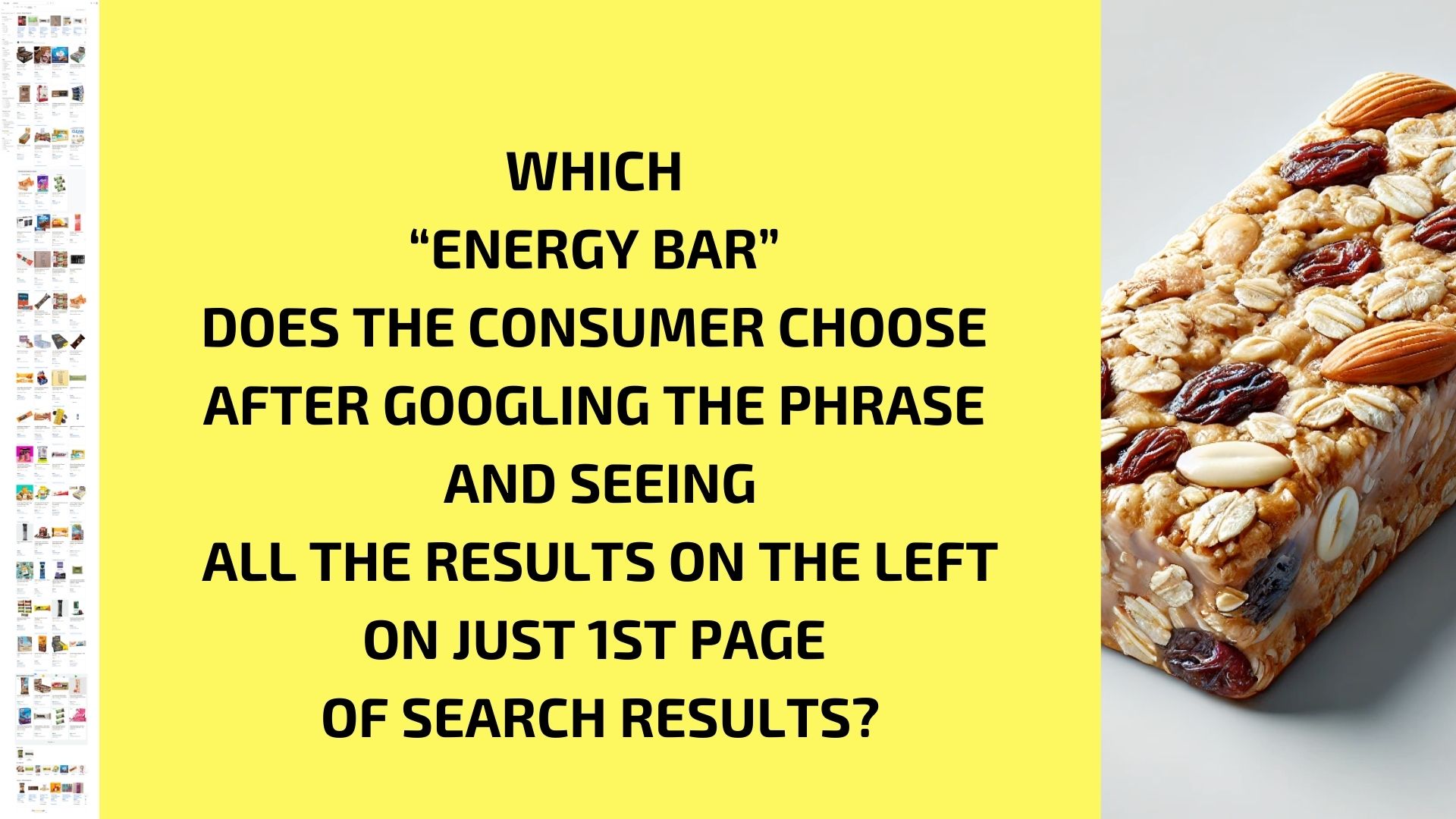
To me personally, it feels like borderline insanity. “Insanity is doing the same thing over and over again and expecting different results.” This phrase highlights the irrationality of repeating the same actions while expecting a different outcome. I’ll be honest. I wouldn’t pay a dime for this kind of thinking if it were my brand or project. I consider it a total waste of resources!
Relying on Data Scraps vs. Learning What Motivates Consumers
Many food and beverage brands also struggle because they hire marketers who struggle with understanding the consumer’s mindset —a double struggle!
An entire generation of social media marketers has grown up believing that basic data—age, demographics, preferences—is sufficient for effective marketing. Social media platforms only provide surface-level insights, retaining the more valuable data for themselves. These platforms feed brands/sellers scraps of data and keep the real data to themselves. This reliance on superficial metrics is extremely limiting, as it fails to capture deeper motivations, needs, or the life contexts of consumers. Social media was effective until it became saturated with brands and ads that, for the most part, all look the same. Now, strategies must evolve to engage more deeply, akin to TV advertising, focusing on the psychological and sociological contexts in which consumers operate. Getting deep into their minds and engaging with the internal dialogue consumers are having with themselves is essential.
When I go on Instagram and (usually out of pure professional curiosity) click on a somewhat interesting ad that appears in my feed, I instantly get targeted by 1000 similar brands and products looking for lookalikes. Ironically, even though I devise ad campaigns and produce content for a living, I don’t buy things I don’t need, but I constantly observe how these things work in the wild, so I can do my job better. When faced with very similar products, which one do I choose to buy (if I even decide to buy)? If I already bought something that I needed, why would I want to buy another one from a different brand if I already got something similar? Most consumers won’t buy another piece of a similar product, at least not instantly, but the ad retargeting starts working instantly. The way campaigns are distributed on social media is pretty random and inefficient.
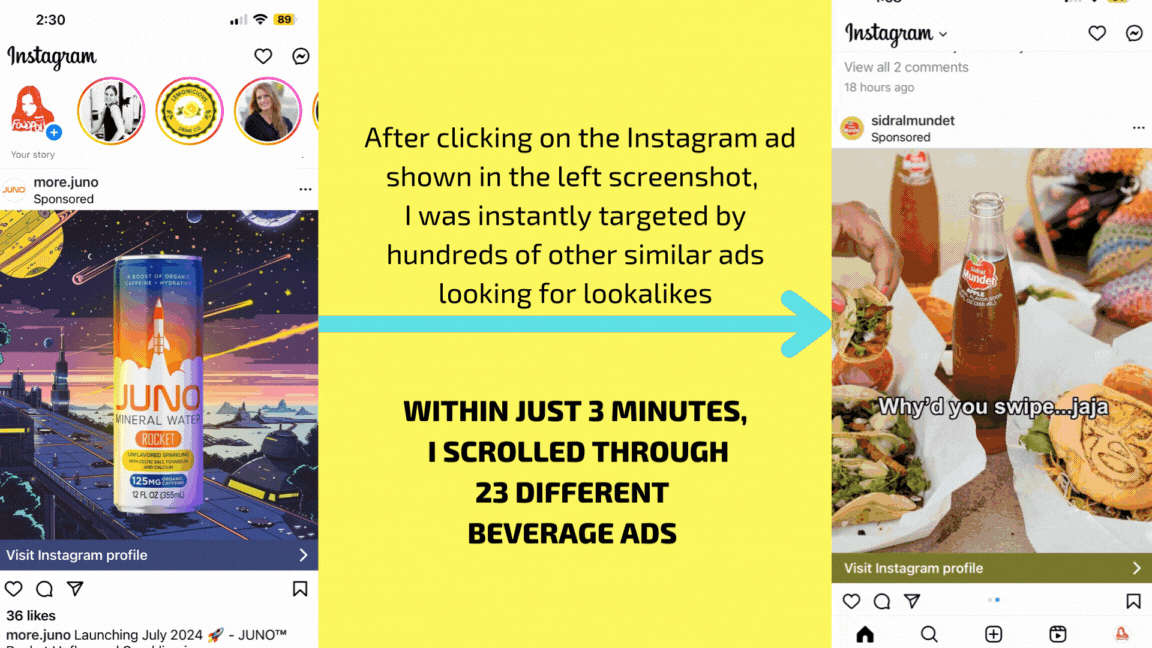
Food and beverage marketers often hire natives to social media platforms to produce videos of recipes using their products or to inject items into their lifestyles. It’s always obvious when this is happening because they almost stick that product into the scroller’s eye. These influencers are typically chosen because of their follower counts, interest niches, or whatever other predictable metric matters to the brand. But do these creators and the people choosing them even understand what matters to consumers and how they think? Rarely do I see this kind of thoughtfulness. This leads to a hamster wheel cycle of volume content and copycatting format, where brands miss the point and opportunity to connect with their consumers and spark any type of loyalty. Why? Because they hire random people who know how to make a social video but don’t understand what triggers consumers and have no interest in nurturing relationships with brands’ potential customers. Most social creators know what they know, which is how to make a mediocre reel, story, and post on Instagram or TikTok.
Sometimes, when they are more expensive and creative, they produce drool-worthy images or very entertaining videos, but that’s about all they can do. There is no strategy behind it—it’s random, and randomness breeds randomness.
🥩 Case in Point: The Steak Ad a.k.a. “Flash in the Pan” Ad
A recent example involved a social media ad that one of my creative friends showed me. He produced it for a cookware brand trying to sell a new frying pan. The content was beautifully and professionally produced, displaying a delicious, perfectly cooked steak and other foods being cooked to perfection 🍳. However, as a viewer, my immediate thought was about wanting to eat the steak, not to buy the pan. It made me very hungry, and I thought about how I would love to cook the steak right then—using the frying pan I already have at home. There were no elements in the ad that compellingly highlighted the product, triggered me to buy it, explained why this new pan was superior or gave me a reason to consider purchasing it. Nothing in the ad triggered me to buy that pan—zero. If I hadn’t been told it was a cooking pan ad, I wouldn’t have even noticed. This ad would have been more effective for a company selling steaks, a restaurant, or a cookbook, but not for a cookware company. Period.
This is a prime example of how failing to incorporate psychological triggers can result in a missed opportunity to drive sales. It wasn’t my friend’s fault; he did his job perfectly as an ad producer, following the directions he received. The problem was the lack of strategic thinking on the brand’s side and a basic understanding of consumer psychology. But in the end, they will likely blame it on the creative content, even though it’s their fault.
On another occasion, I consulted with a company that had licensed a major celebrity’s brand name for their cookware product line and was trying to enter the market by selling pots and pans directly to consumers (D2C). They failed miserably, even though I warned them about what not to do. The influencers and creators they hired got a lot of likes and comments like “Oh, I love the color of that pan” and “Oh, I need that set,” but almost no one was buying them! It was a total flop. They were too “frugal” to invest in certain aspects of what I advised on and had to shut down the operation.
Creators are not Consumer Behaviorists
Brands often dispose of influencers, creators, and photographers like used toothbrushes, switching to another in the hope of better results, but they frequently fail to achieve them, or the results are merely temporary. It’s a mentally exhausting cycle, and extremely mindless. Legacy brands have behaviorists within their ad agencies, but smaller brands that lack access to such inquisitive individuals (or don’t understand why they need them) are often hesitant or don’t want to invest in the process of creating a real creative strategy, not just the bunch of randomness. This scarcity mindset, or so-called “poor person” mindset, leads to the path of least resistance and minimal results: copying other content, mimicking competition, or simply being in denial about not knowing what to do. None of these approaches constitutes a strategy.
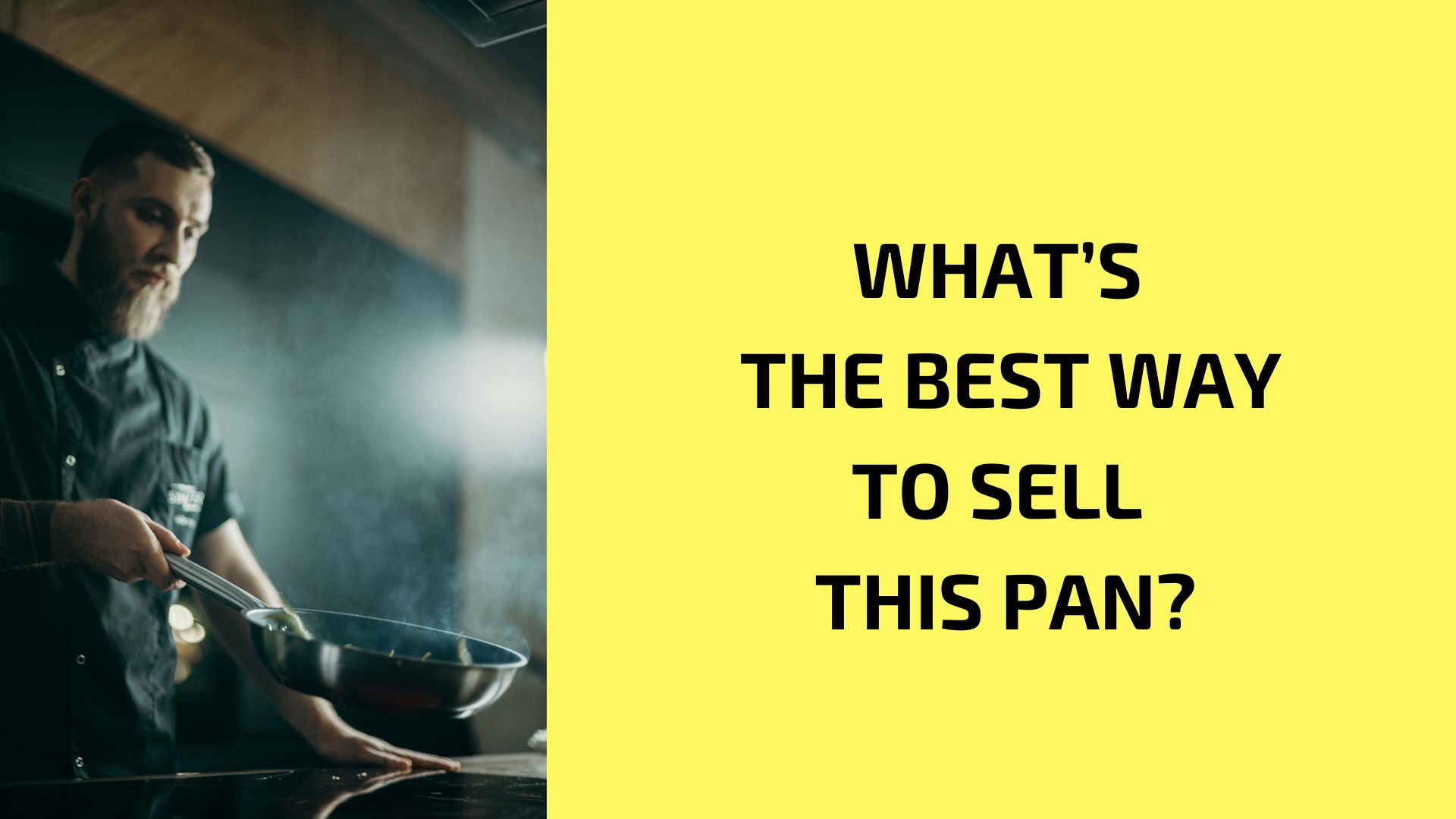
UGC Content Isn’t a Strategy; It’s Herd Mentality
In today’s social media landscape, there is a growing trend of brands creating content that appears to have been made by everyday users, flooding social media with “branded user-generated content.” While this approach might initially grab attention, it often loses its effectiveness when it comes to conversion and is overused for sales. People scroll past countless videos of this type every single day. The key challenge for brands is not just to get noticed but to persuade people to buy their products, which requires an extremely thoughtful and strategic approach. Why? Because most consumers (hoarders excluded) have limited $ resources and cannot be fooled more than once, especially when they encounter 1,000 similar images or videos from 500 different brands.
Rejecting a unique, original approach and the fear of being different isn’t a viable strategy, and it’s becoming increasingly common, if not prevailing. It’s a recipe for disaster and wasted time and resources. As the old American saying goes: You get what you pay for.
Social media has given organic users a sense of righteousness, making them believe they know best. Successful content creation requires not only technical skill in cloning content formats across different products but also a reliance on more than just pure luck.
When I see recipes on social media, I often can’t even tell whether the product being advertised is soda, ice cream, cream cheese, or cookies because they all look the same. They follow a script that could easily apply to five completely different products. This lack of uniqueness and differentiation is a missed opportunity for brands to stand out and connect with their audience.
Misconceptions About Generational Likes or Dislikes in Aesthetics
Many brands and marketers assume that specific generations are drawn toward particular aesthetics. A prevailing trend in food photography features products in bright, hard light, arranged editorially. However, I don’t believe this approach is necessarily the only or always effective. This aesthetic is popular among creatives who are comfortable with it, but most consumers, except perhaps those in the creative industry, don’t care for it. Consumers are diverse and dynamic, generally preferring content that is educational, informative, life-changing, entertaining, and interesting, rather than merely cool-looking or perfectly staged.
As a creative with a background in sociology and psychology, I understand the importance of aligning content with consumer behavioral triggers. I often speak about this topic, though it seems only a few are willing to listen. During my tenure with a market research group, we tested numerous food and beverage products through focus groups, learning how consumers think and what persuades them. This experience taught me that product ads and designs must align with consumer psychology and cultural backgrounds. When I transitioned to the creative world, I recognized my own aesthetic preferences but did not let these influence my work. Instead, I incorporated psychological persuasion into many concepts to trigger thoughts and reactions aligned with clients’ goals and products. Understanding consumer motivation is key to creating content that drives conversions, sales, or brand recognition.
Consumers want to see products in action, visualizing how these items can change or enhance their lifestyles. They want to see the serious application and how it fits into the lifestyle they aspire to create, so recipes will never go out of fashion, but they need to be created in a way that is recognizable and distinctive for the brand if food and beverage marketers want to convert accidental one time purchasers into loyal customers.
In the end, brands that blend in rather than stand out will not be visible, let alone effective in their sales. Finding your own visual and verbal identity, strengths, and triggers is crucial for developing effective digital strategies. I follow countless brands and services related to what I do, and I observe a total uniformity in things and approaches. Almost everything looks and sounds the same. It’s almost frightening, and it’s baffling that some CPG food and beverage founders, who are busy building their brands, often aren’t directly involved with content, thus wasting their limited financial resources on ineffective, endless trial and error.
I dedicate this song to all the hamster-minded food and beverage marketers! Remember: Don’t let them put you in their mindless hamster wheel!




